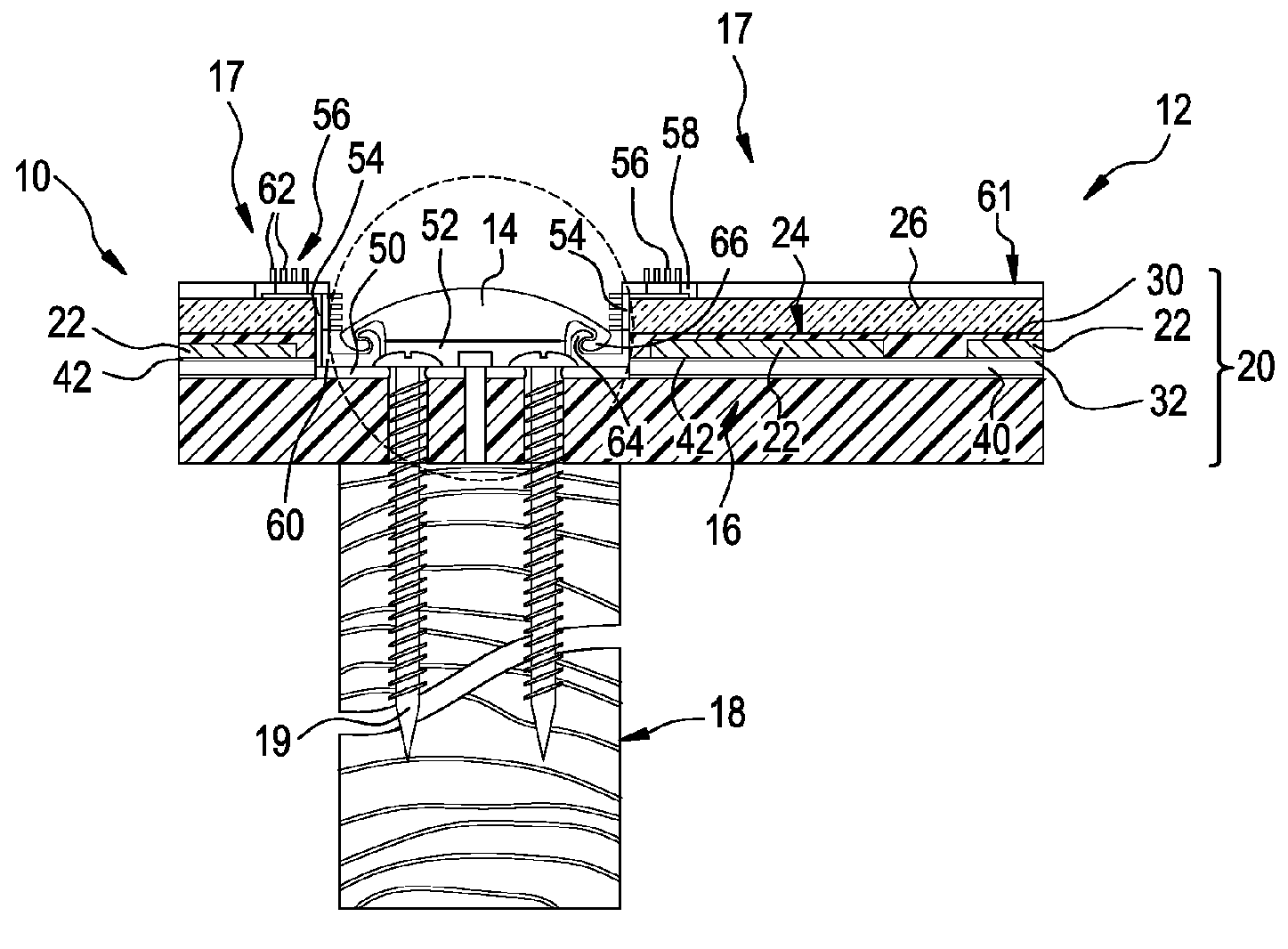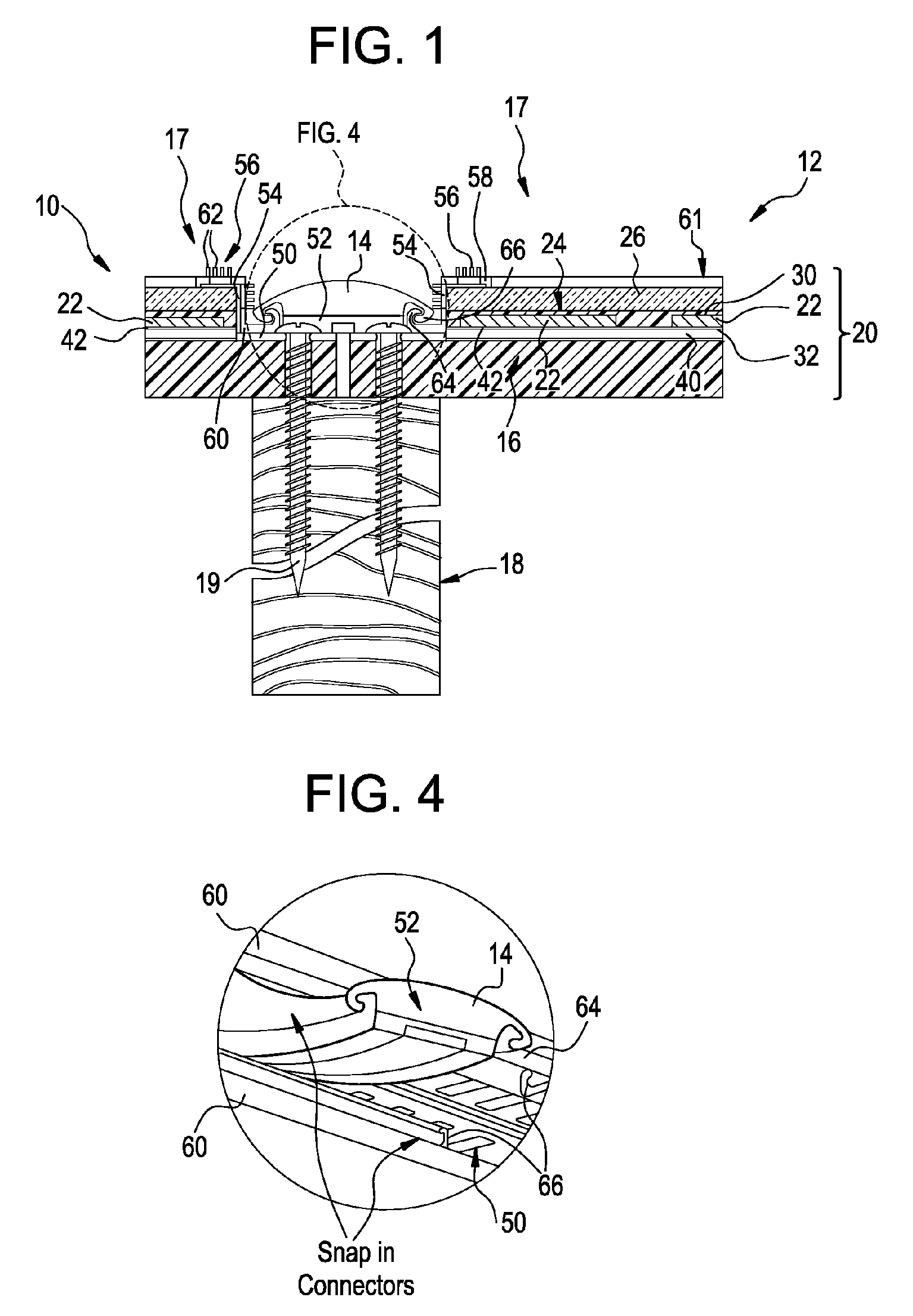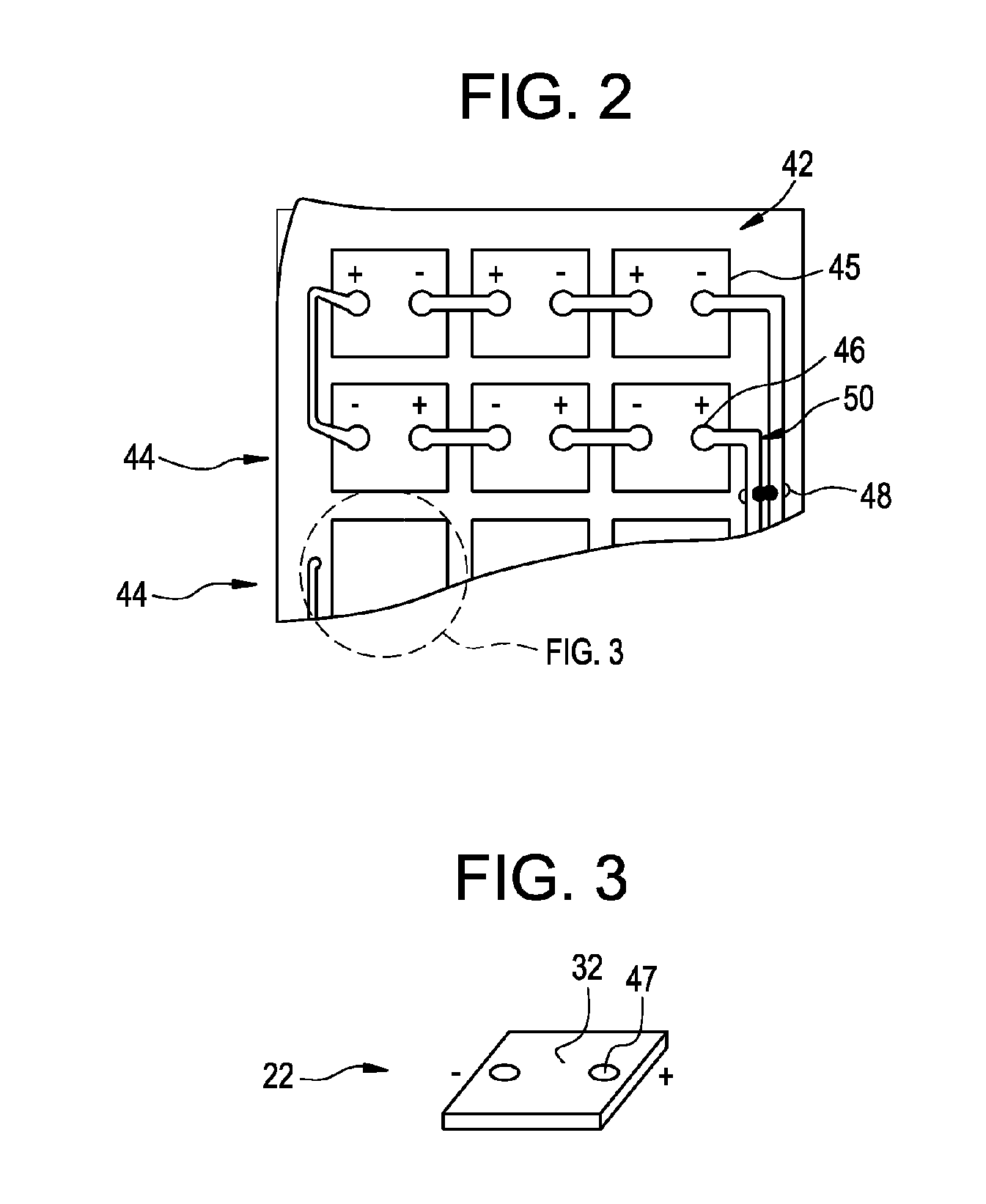Photovoltaic integrated building component
a technology of photovoltaic and building components, applied in the direction of pv power plants, heat collector mounting/support, light and heating equipment, etc., can solve the problems of requiring external wiring, unable to provide electrical connection to other tiles without external wiring, and reliance on other sources of electric energy, so as to facilitate the attachment to the building structure
- Summary
- Abstract
- Description
- Claims
- Application Information
AI Technical Summary
Benefits of technology
Problems solved by technology
Method used
Image
Examples
Embodiment Construction
[0021]The present invention relates generally to framing systems and more particularly is concerned with systems adapted to mount panel members or laminates in an array on a supporting structure. The present invention will be exemplified with particular application to the field of mounting solar panels, also known as photovoltaic (PV) panels which are adapted to be mounted suitably at an angle to the horizontal and receptive to incident light with respect to the sun. However, the invention and the framing system is not necessarily limited to just these applications and extends to analogous applications. In this discussion we refer to use of the described system as mainly in roof mounting or roof integrating applications. However the system described can equally be suitable, with minor adjustments, for use in a vertical arrangement as an external PV wall cladding system.
[0022]Referring now to FIG. 1, two solar cell or PV laminate assemblies 10 and 12 are operably coupled to one anoth...
PUM
 Login to View More
Login to View More Abstract
Description
Claims
Application Information
 Login to View More
Login to View More - R&D
- Intellectual Property
- Life Sciences
- Materials
- Tech Scout
- Unparalleled Data Quality
- Higher Quality Content
- 60% Fewer Hallucinations
Browse by: Latest US Patents, China's latest patents, Technical Efficacy Thesaurus, Application Domain, Technology Topic, Popular Technical Reports.
© 2025 PatSnap. All rights reserved.Legal|Privacy policy|Modern Slavery Act Transparency Statement|Sitemap|About US| Contact US: help@patsnap.com



